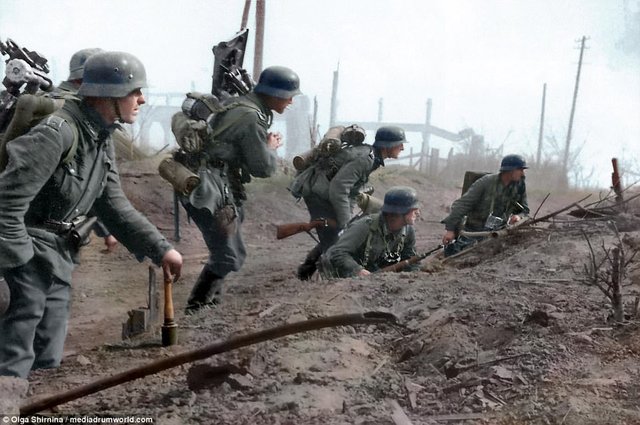1942 - Battle for Stalingrad

Until the autumn of 1942, the German army was consistently victorious. Europe lay under German domination, from France in the west to the Volga River in the east; from the Arctic Circle in Norway to the shores of North Africa. The battle for the city of Stalingrad proved a decisive psychological turning point, ending a string of German victories in the summer of 1942 and beginning the long retreat westward that would end with Nazi Germany's surrender in May 1945.
In the summer of 1942 the German Sixth Army under General Friedrich von Paulus was ordered to take Stalingrad, an industrial center and obstacle to Nazi control of the precious Caucasian oil wells. In August, the German Sixth Army made advances across the Volga River while the German Fourth Air Fleet reduced Stalingrad to a burning rubble, killing over 40,000 civilians. In early September, General Paulus ordered the first offensives into Stalingrad, estimating that it would take his army about 10 days to capture the city.
However, Soviet General Vasily Zhukov used the ruined city to their advantage, transforming destroyed buildings and rubble into natural defensive fortifications. In a method of fighting the Germans began to call the Rattenkrieg, or “Rat’s War,” brutal street fighting bogged the Germans down as the Soviet's poured more and more men into struggle to hold the city.
In mid-November 1942, the Soviet army launched a massive counteroffensive, which involved 500,000 Soviet troops, 900 tanks, and 1,400 aircraft. Within three days, the entire German force of more than 200,000 men was encircled.
Italian and Romanian troops at Stalingrad surrendered, but the Germans hung on, receiving limited supplies by air and waiting for reinforcements. Hitler ordered Von Paulus to remain in place and promoted him to field marshal, as no Nazi field marshal had ever surrendered. Starvation and the bitter Russian winter took as many lives as the merciless Soviet troops, and on January 21, 1943, the last of the airports held by the Germans fell to the Soviets, completely cutting the Germans off from supplies. On January 31, Von Paulus surrendered German forces in the southern sector, and on February 2 the remaining German troops surrendered. Only 90,000 German soldiers were still alive, and of these only 5,000 troops would survive the Soviet prisoner-of-war camps and make it back to Germany.
TO LEARN MORE ABOUT HISTORICAL EVENTS IN the 1940s VISIT History0x - https://www.history0x.com/1940s